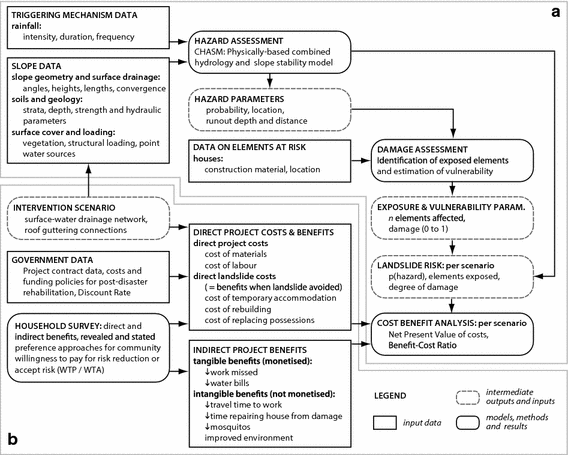Cost-benefit
Despite the recognition of the need for mitigation approaches to landslide risk in developing countries, the delivery of ‘on-the-ground’ measures is rarely undertaken. With respect to other ‘natural’ hazards, it is widely reported that mitigation can pay. However, the lack of such an evidence base in relation to landslides in developing countries hinders advocacy amongst decision makers for expenditure on ex-ante measures. This research addresses these limitations directly by developing and applying an integrated risk assessment and cost–benefit analysis of physical landslide mitigation measures implemented in an unplanned community in the Eastern Caribbean.
In order to quantify the level of landslide risk reduction achieved, landslide hazard and vulnerability were modelled using CHASM (before and after the intervention), and project costs, direct and indirect benefits were monetised. It is shown that the probability of landslide occurrence has been substantially reduced by implementing surface-water drainage measures and that the benefits of the project outweigh the costs by a ratio of 2.7–1. This result adds to the evidence base that ‘mitigation pays’ with respect to landslide risk in the most vulnerable communities—thus strengthening the argument for ex-ante measures. This integrated project evaluation methodology should be suitable for adoption as part of the community-based landslide mitigation project cycle, and it is hoped that this resource, and the results of this study, will stimulate further such programmes.
Reference:
Holcombe, E.A., Smith, S., Wright, E., Anderson, M.G. (2012) An integrated approach for evaluating the effectiveness of landslide hazard reduction in vulnerable communities in the Caribbean. Natural Hazards, 61(2): 351-385.

